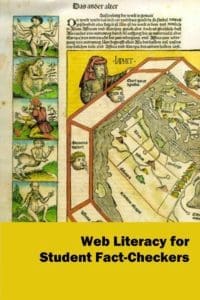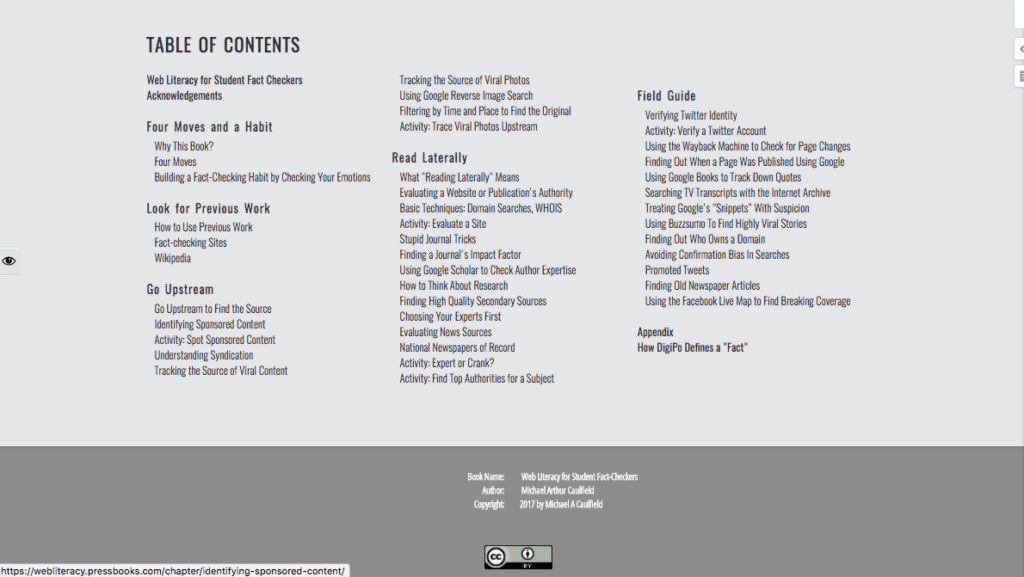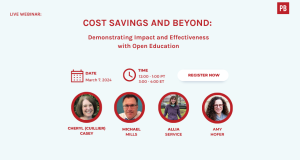Separating Fact from Fiction on the Internet: Mike Caulfield’s Guide to Student Web Literacy (Built on Pressbooks!)
By Elizabeth Mays |
Mike Caulfield is the director of blended and networked learning at Washington State University Vancouver. He also leads the Digital Polarization Initiative (Digipo), a “cross-institutional initiative to improve civic discourse by developing web literacy skills in college undergraduates,” which is part of American Association of State Colleges and Universities’ American Democracy Project.
 In February 2017, Caulfield released the open (CC BY) textbook, Web Literacy for Student Fact Checkers,” built on Pressbooks.
In February 2017, Caulfield released the open (CC BY) textbook, Web Literacy for Student Fact Checkers,” built on Pressbooks.
He began writing the book, which was a pivot of an earlier concept, in November 2016, and wrote the bulk of it over the following winter holiday break.
“It occurred to me that what the world needed, much more than a scholarly book or extended philippic, was a textbook or field guide that explained how to survive in this world of viral information flows and social media firehoses,” Caulfield wrote in a blog post detailing the origins of the project.
Caulfield said faculty were interested in doing such work in their classrooms, but were nervous about teaching it without a structured approach or resource they could have their students follow.
Originally Caulfield thought about creating a series of blog posts, but after conversations with faculty determined the more structured format of a textbook would better serve their needs.
The book’s focus, he explained in the post, is on “the question of what web literacy for stream culture looked like.”
Caulfield has continued to expand the book since its release, based on feedback from faculty on their needs and the gaps in the book.
He hopes to get more collaborators–faculty and others–involved in the future, and he sees a particular need for collaboration to add new content and keep the text up to date.
“The future of this text has to be collaborative,” he said.
Much of the content in the book–which points to concrete, specific tools and methods to verify information, or dispel disinformation–has a limited shelf life. “It’s something that’s going to have a high rot rate, and we’re gonna need to bring others in,” Caulfield said. “This is some of the fastest-aging material around because it is a never-ending war between people trying to sort through the information pollution out there and people who find new and better ways to propel pollution into the network.”
He said there is a good precedent in open circles for building a community around the book that maintains and extends it. “It’s difficult to get people to collaborate on something initially,” he said. “But collaborating on maintenance and extension on something is easier to do, and I’m hoping that’s where we end up going on this.”
He also hopes people will take advantage of the book’s open license, combined with the ability to copy the book in Pressbooks to create additional derivatives, perhaps with different screen shots or localized examples.
In building the book, Caulfield used Pressbooks’ parts feature to divide the book into broad sections under which he uses chapters to explain strategies and tactics under those headings. The main parts are followed by a field guide part of the book whose chapters detail specific aspects of fact checking in an almost “episodic” way.
He wanted to keep the main portion of the text short enough for students to read in about two to three hours, whereas the field guide is designed to be read as needed to support their work on specific projects. Such a structure allows faculty to use the book for modules as short as a week or two, as well as for longer projects.
Ideally, he said, faculty members would have their students read the first four sections and then the handful of articles from the field guide that are most relevant to their assigned project.
The field guide is one area Caulfield would like to expand in future editions. He would also like to add more activities.
Users of the book can add their feedback to the book using Hypothes.is, which enables any readers with a Hypothes.is account to comment on or annotate the book. Caulfield said this mechanism is best utilized as part of a specific request for feedback from a particular group rather than for seeking casual feedback from anyone.
Adopters of the textbook come from WSU and the many other institutions that participate in the Digipo project, through which students fact-check or comment to add context to news stories from various social streams, as well as others who’ve learned of the book and adopted it.
Caulfield said he is surprised by the degree to which the book spread into classroom use. He emails Digipo participants to let them know when the book and updates are available, but mainly thinks the book has spread through word of mouth as well as through librarians and library guides.
“One of the vectors through which it has spread has been the library community, which has been very generous in promoting the book.”
When building the book, Caulfield appreciated the similarities to WordPress (which Pressbooks is based on) in the Pressbooks interface, along with the ability to embed videos in the web book and also the home page for the web book, which he said has helped to market the book.
“The look of the front page where the table of contents is right there has been very useful to people to whom I’ve sent the book. They’re coming to the book and they’re trying to quickly get a sense of whether this is a good fit for what they do. The way that faculty do that around the world is to scan the table of contents.”
He said one thing he would like to see in the future is the ability to better flag additional chapters he would like to add in the future to supplement the core of the content set apart from the flow of the book, in a way that does not make the overall book appear unfinished.
In addition, the way Pressbooks displays the content license (which Caulfield intended to be CC BY in this case) was not intuitive. (We’ve helped to fix this and have made further improvements to this functionality since!)
Caulfield said he is surprised at the degree to which the book has impacted him professionally.
“There’s a lot of different vectors through which I’ve had influence on the way people teach this stuff, and some of those have been quite successful,” said Caulfield, who’s received his share of press in prominent media outlets. “This textbook has really outdone them all in terms of the broad impact.”
It’s great to be quoted in mass media or to present at major conferences, he said, but that’s not effective if people don’t have a clear guide on what to do next. “Whereas with this, I get an email a week from somebody who thanks me for the book, and lets me know they have already integrated it into their teaching.”
The book has developed a life of its own, Caulfield said.
“I haven’t been that great a steward or promoter of this book since it’s been up there,” he said. “I put in the initial effort, and it’s been on autopilot for months, and yet it’s still attracting new users. That’s not a pattern of impact I see in other areas. There’s something about a book in a central location that just goes really well with word-of-mouth promotion.”




